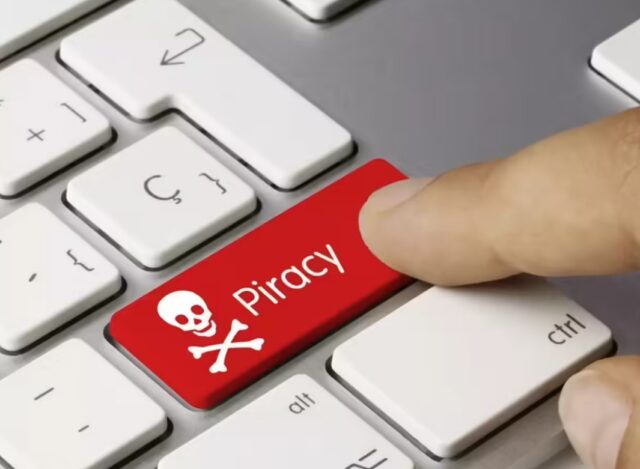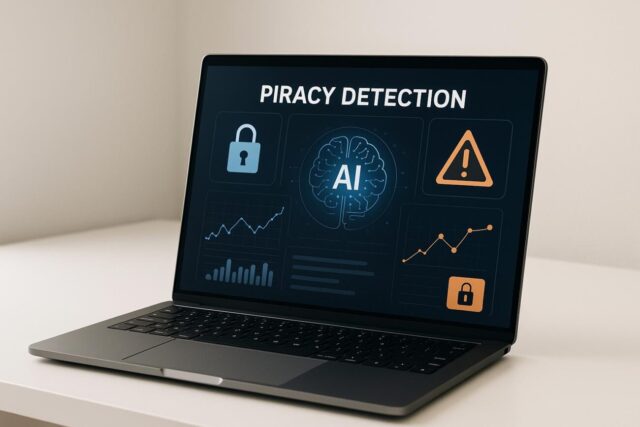
With movies, shows, and music just a click away in the digital age, their protection is a concern now. Streaming has made entertainment at our fingertips, but in the process, it has provided opportunities for illegal downloads and sharing too.
In India, where digital viewing is increasing exponentially, this cause for concern is all the more real. Anti piracy technology is today the major weapon to guard creators’ hard work and ensure no illegal distribution.
This article describes how this technology ensures securing digital content in the streaming ecosystem of India.
The Requirement of Robust Content Security
India boasts one of the world’s largest internet populations. With affordable smartphones and data packs, millions of individuals stream video each day. But this quick growth also means larger threats. Piracy is no longer difficult. Screen recording software is used, illegal copies are downloaded, and content is posted on social media and torrent websites. Without adequate protection, streaming sites lose money, and creators lose credit. This is why digital content requires strong shields.
How Piracy Damages the Indian Streaming Industry
Piracy touches all aspects of the streaming economy. It hits production houses for amateur artists. In India, where web series and movies are released weekly, content leaks within hours. Not only does this slice the earnings, but it also devastates the viewing experience of legitimate subscribers. Even some platforms get into legal strife when pirated content lands up on their servers inadvertently. Safeguarding the entire streaming chain is more critical than ever now.

Encryption Protects Streaming Content
Encryption is another technique that safeguards data when it is streamed. It encrypts the video file such that the correct user alone is able to play it. That is, even if someone records the data, they won’t be able to watch it without the decryption key.
Indian OTT players are now employing this to secure the entire video delivery chain. It is particularly valuable for securing high-budget movies, cricket matches, and other live content that are likely to be pirated.
Forensic Markers to Track Leaks
Forensic watermarking takes this a step further. This product places individual, invisible signatures on every stream going to an individual. Even if there is a screen recording, the site can determine who recorded it. This is effective in the Indian market space where password sharing and screen recording are popular. It serves as a warning mechanism and also provides solid evidence to prosecute if necessary.
Content Recognition Technology for Piracy Surveillance
Several platforms now employ sophisticated methods such as content recognition technology that browses the internet and identifies pirated copies of their content. This feature checks online versions of videos against the original one and identifies anything similar. In a nation like India, where pirated content gets uploaded to unofficial sites and distributed on social sites, this technology helps keep watch on illegal uploads and ensures speedy removal.

Legal Assistance with Technology
Technology in itself cannot prevent piracy. In India, websites too need to comply with digital content regulations. But with robust anti piracy technology added to it, legal action becomes much simpler. For instance, watermarking can be used as legal evidence for courts. Websites can also report piracy cases to the cybercrime unit with proper evidence. Law and technology together assist in securing digital content and making piracy dangerous for criminals.
Preserving Live Content and Premieres
One of the largest victims of piracy in India is live material. Cricket matches, premiere movies, and award shows are commonly pirated while they are still live. Such live piracy requires quick action. Technologies such as real-time monitoring and automated takedown solutions assist in tracing and halting these leaks in real-time. Several Indian broadcasters now depend on such systems throughout major live events to ensure safe delivery.
Cloud-Based Security Solutions
Indian OTT players usually have cloud-based networks for delivering content. To secure this system, cloud security measures are employed. These measures scan for any suspicious activity, secure login credentials, and ensure that only authorized users can use the system. These cloud safeguards are particularly beneficial for smaller players who might lack large IT divisions. It ensures even independent creators and startups have an equal opportunity to safeguard their work.

Role of AI and Machine Learning
Artificial Intelligence is revolutionizing the way platforms combat piracy. AI can learn the way piracy occurs and immediately identify patterns. It can browse thousands of videos and web pages in minutes to detect pirated content. In India, where piracy propagates rapidly over social media and local sites, AI provides a robust method to identify and block it in its initial stages. It also saves the expense of recruiting large monitoring teams.
User Education Regarding Piracy
User education is also content protection. Most Indian viewers are not aware of the harm that piracy inflicts. Campaigns informing people of the effects of piracy on artists and industry workers can help. When individuals know the effects, they tend to support legal websites. Streaming services in India are already utilizing social media and ads to create awareness.
The Cost of Not Being Protected
For Indian streaming businesses, forgoing digital security tools can be an expensive error. Pirated content can result in canceled subscriptions, reduced ad income, and legal issues. In certain situations, producers lose faith in platforms that do not defend their content. Conversely, effective anti piracy technology generates confidence and attracts more creators to the platform. It becomes a solid foundation for sustainable growth.

Why India Requires Local Solutions
India has a unique streaming environment that is unlike other nations. With regional languages aplenty, local devices, and user types, piracy works differently here too. That’s why India requires its own set of solutions and tools. Local cybersecurity firms and local startups now design bespoke technologies that are appropriate for India. This involves low-bandwidth protection for streaming, regional watermarking, and mobile-centric piracy detection.
The Role of Content Creators
Creators also have a role to play. They can ensure their work remains safe by understanding the fundamentals of digital security and requiring adequate protection from platforms. Most Indian creators are now opting for platforms offering full content protection prior to signing deals. This change of attitude is beneficial to the industry as a whole.
Conclusion
In the expanding universe of Indian streaming, content protection is no longer a choice. Piracy could destroy the digital future and require drastic action. India can safeguard its digital future through strong laws, intelligent tools, and popular opinion. doverunner is a key player in this arena by combining cutting-edge protection techniques with speed and convenience.







